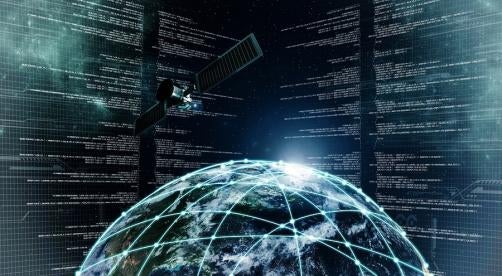Technology is present in every aspect of our lives, and it has become an integral part of our life. The criminal justice is not immune. Dealing with jobs in criminal justice today involves GPS systems, robots, advanced cameras. The high-performance computer systems and Internet technologies are also involved. All these technologies improve surveillance and investigation while making analysis procedures easier.
Today, many police officers have some kind of mobile data terminal in their car. This in-car device serves them to be in touch with a central dispatch office. Mobile data terminal can also display mapping, CAD drawings, and safety information. Some police dispatchers even use the advanced mobile phone technologies. Those involve Computer Aided Dispatch software among others. The custodians and evidence technicians use inventory management software. Those systems help them keep track of the property rooms and other secure areas.
Computer programs have incorporated themselves into almost every facet of law enforcement. They are associated with different jobs, ranging from robotic cameras to DNA testing. The number of electronics and new technologies in criminal justice is rapidly growing. And they all have the same goal – to make the jobs more effective.
But this is a two-edged sword, as the criminals also make use of these technologies. They abuse technology for illicit usage. There are more and more tech-savvy criminals these days. That’s why experts in criminal justice have to keep a step further in this “technology combat .” Despite all these advanced technologies, It happens that someone is unjustly accused. This is where a defense criminal lawyer comes in. A lawyer has to advocate vigorously when protecting the rights of accused persons. The criminal lawyer guelph serves as an example in Hamilton, Ontario.
Let’s take a look at some new technologies that have found use in criminal justice.
Detection & Positioning Systems
There are some unique forms of tech advancements in the field of criminal justice. Those include different positioning and detection systems, such as:
-
GIS and GPS systems. These systems have been around for years in the police. The officers use them for different purposes. When identifying a suspect location, getting the most effective routes, and so on. Gone are the days when police officers had to engage in a high-speed, dangerous chase. GPS help them track criminals much easier today. Likewise, GIS systems track police vehicles. That helps departments determine their location at any moment.
-
Gunshot detection systems (GDS). The police often install the systems of electronic sensors in high-crime areas. That helps them detect where a gunshot comes from. This way the officers have a better response time.
-
Robotic cameras, robots, and drones. The robots can replace the officers in many dangerous situations. Thus, they can check out the hazardous areas, diffuse the bombs, and the like. Apart from terrestrial robots, there are also flying drones. Those devices provide a bird’s eye view, which is beneficial for many crime scenes. They are especially useful in hard-to-reach places.
-
Automatic License Plate Recognition systems. Many police cars are equipped with the cameras that can capture license plates with ease. This allows the officers to see at once if a car is stolen or not.
Databases & Information Exchange
The computer database is another important technological tool in the criminal justice. There is a wide range of database systems that deal with profiling and fingerprints. Besides, they can handle DNA testing, hot spot analysis, and crime mapping alike. Thanks to those databases, information exchange between states and counties is much faster. This allows law enforcement experts to better see connections between events and people.
There’s a matching technological advancement for every single type of existing database. For instance, fingerprinting tools are more thriving than ever before. They involve image enhancement software that makes fingerprints crystal clear. Also, there’re various biometric tools that analyze fingerprints with more success. We have also seen diverse portable tools which take fingerprints in the field. Aside from fingerprints, the digital tools and databases are used in many other areas as well.
Digital Video Recording
The cameras that use the latest digital video recording technology are all around us. This technology is very practical and affordable to use. It didn’t bypass law enforcement of course. The videos captured by a digital camera can serve as evidence later. Sometimes, it could be a crucial proof in a complaint investigation or in court.
Such a camera is quite lightweight and doesn’t take a lot of space. This allows the police officers to carry it on their uniform or in their car. The cameras can be connected to systems that enable wireless download. It ensures that the vital evidentiary shots are logged with peace of mind. By the way, this reduces officer downtime a lot.
Rapid ID systems
This technology allows officers to have instant access to driver information. The officer can check this info on any traffic stop. The quick access to driver’s license photos is possible through online databases. It lets officers verify your identification if you don’t have the identification card or driver license with you.
Besides driver’s license photos, these can also serve for obtaining of biometric information. This usually refers to the fingerprints from the subjects. Once obtained, the information can be compared and checked in the criminal database. The matching fingerprints will appear if a subject has some arrests in past history. It allows an officer to identify that person on the spot. Moreover, it’s also possible to get information about outstanding warrants. Unfortunately, this technology is only available in some states for now. But we can expect to see it more often in the hands of law enforcement professionals in the coming years.
In-Car Computers
Aside from in-car cameras, patrol officers often use in-car computers, too. Those computers help them in performing everyday jobs. Not only that this technology increases efficiency but also reduce paper. Arrest reports need a paper to be typed. Once handwritten, someone should create a traffic citation, which involves an electronic device. The patrol that has a printer inside the car can supply a copy of this document for the offender. Even payroll and time reporting can be handled online today. Besides production, electronics is also used for the transmission of the documents. The officers can forward these reports electronically in some cases. This way, the use of paper is minimized.
Computer Aided Dispatch
Dispatchers use punch card, paper, and pen to keep track of dispatch officers and case numbers. The same goes for log calls for activity and service. Well, this job can be done more sophisticated now, by using dispatch software. GPS devices are already integrated into officers’ computers or cars in many departments. Those units report the officers’ position to the dispatch centers. Thus, dispatchers can determine which patrol is closer to a call. It helps them assist citizens in the shortest possible time. Furthermore, it helps the dispatch centers record radio transmission and phone call.
3D Imaging of Crime Scenes
In recent years, we have seen a new method of dissecting every aspect of a crime scene. This fascinating scanning technology looks like something from science fiction. Those devices take a 3-dimensional scan of a whole crime scene, switching a lot of sketches and photos. This way, a crime scene can be shown to detail.
And the list of technology devices in criminal justice goes on. There are also body-worn cameras, through-the-wall radars, predictive analytics software, and so on. While some are not completely tested yet, other devices are pretty controversial.
Law enforcement agencies across the world are recognizing the value of those tools. More and more departments use the new technologies for everyday activities. Yet, many still have to learn how to use software and computers more effectively. That will set them up for success in their future careers.




 i
i


